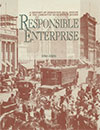Edmonton's Second Real Estate Boom
Negotiations with railway companies rekindled the speculative spirit of 1881-1882. Investment in Edmonton real estate increased rapidly, as did the number of land promoters, real estate brokerage companies, and new subdivisions.
Between 1903 and 1914, 274 new subdivisions were created, which inflated the assessed value of city property to $191 million. Most of these existed only on paper and would never be developed. This rate represented an 1800 percent increase in the number of subdivisions on the north side alone compared with an 800 percent increase in the total population of Edmonton between 1904 and 1914.
These new subdivisions were located on both sides of the river, with the largest concentration being northeast of the central business district. Mundy's 1912 map of Greater Edmonton shows new subdivisions established as far as seven miles from the downtown area. The names chosen were common to other Canadian cities, and included Tuxedo Park and Queen Mary Park. With the exception of Windsor Park, Glenora, and Beau Park, these subdivisions did not deviate much from the grid pattern. The cumulative result was the creation of a blueprint for a "Greater Edmonton" that dazzled the imagination of Edmonton's boosters, strongly influenced many aspects of civic policy, and created new opportunities for Edmonton real estate brokerage firms.
The economic opportunities created by this boom led to the reorganization of some of Edmonton's pioneer firms, the best example being McDougall and Secord. On March 16, 1909, they formed McDougall and Secord Ltd. They dealt in a wide variety of investments, including stocks and bonds, and real estate for speculation and development. The firm also dealt in fire, life, and accident insurance and served as private bankers. They loaned mortgage money, created and administered trust funds, advanced money to other entrepreneurs, dealt in bills of exchange, promissory notes, coupons, drafts, debentures, and scrip, and bought and sold bullion.
This article is extracted from John Gilpin, Responsible Enterprise: A History of Edmonton Real Estate & the Edmonton Real Estate Board. (Edmonton: Edmonton Real Estate Board, 1997). The Heritage Community Foundation and the Alberta Real Estate Foundation would like to thank John Gilpin and the REALTORS® Association of Edmonton for permission to reproduce this material.





